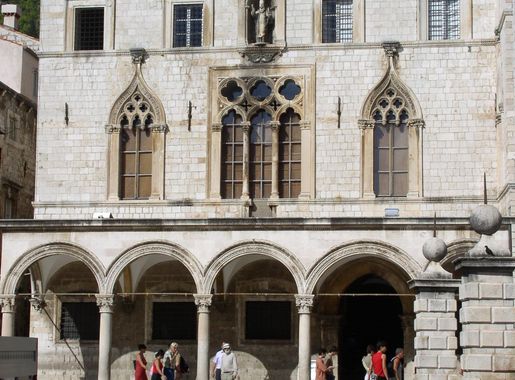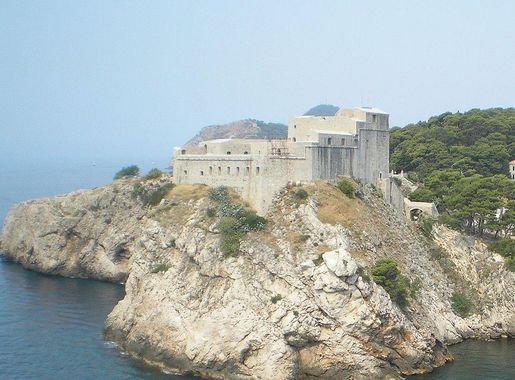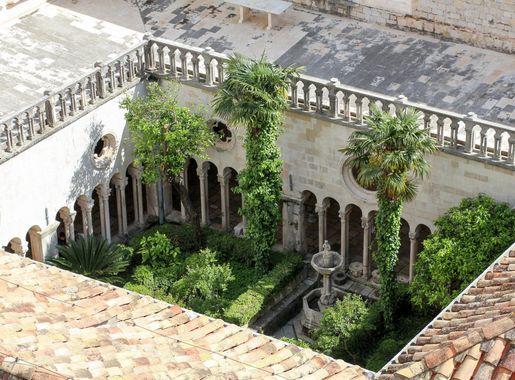
Timeless Charm of Old Town Dubrovnik
Explore the enchanting Old Town Dubrovnik, a timeless treasure trove of medieval architecture, rich history, and vibrant culture set against the stunning Adriatic Sea.
Old Town Dubrovnik is a stunning testament to history and culture, set against the shimmering Adriatic Sea. This UNESCO World Heritage site is renowned for its well-preserved medieval architecture, intricate city walls, and cobblestone streets that transport you back in time. As you walk through the Pile Gate, the main entrance to the Old Town, you are greeted by the impressive sight of the Onofrio Fountain and the grand Stradun, the main street lined with historic buildings, shops, and cafes. Wander through the narrow alleyways to discover hidden gems like the Rector's Palace, a masterpiece of Gothic-Renaissance architecture, and the beautiful Sponza Palace, which now houses the city archives. Don't miss the chance to climb the ancient city walls, offering breathtaking views of the city and the sea. For a unique perspective, take a cable car ride to Mount Srđ for panoramic vistas of Dubrovnik and its surroundings. Old Town also boasts a vibrant cultural scene with numerous museums, galleries, and churches, such as the Dubrovnik Cathedral and the Church of St. Blaise. The town's lively atmosphere is enhanced by its array of restaurants and bars where you can savor local seafood delicacies and fine Croatian wines. Throughout the year, the Old Town hosts various festivals and events, including the famous Dubrovnik Summer Festival, blending the charm of the old with the vibrancy of the new.
Local tips in Old Town
- Wear comfortable shoes as the streets are cobblestone and can be slippery.
- Visit early in the morning or late in the afternoon to avoid the crowds.
- Carry some cash as not all small shops and cafes accept credit cards.
- Take a guided tour to learn about the rich history and hidden stories of the Old Town.
- Check the schedule of the Dubrovnik Summer Festival if you're visiting in July or August.
Timeless Charm of Old Town Dubrovnik
Old Town Dubrovnik is a stunning testament to history and culture, set against the shimmering Adriatic Sea. This UNESCO World Heritage site is renowned for its well-preserved medieval architecture, intricate city walls, and cobblestone streets that transport you back in time. As you walk through the Pile Gate, the main entrance to the Old Town, you are greeted by the impressive sight of the Onofrio Fountain and the grand Stradun, the main street lined with historic buildings, shops, and cafes. Wander through the narrow alleyways to discover hidden gems like the Rector's Palace, a masterpiece of Gothic-Renaissance architecture, and the beautiful Sponza Palace, which now houses the city archives. Don't miss the chance to climb the ancient city walls, offering breathtaking views of the city and the sea. For a unique perspective, take a cable car ride to Mount Srđ for panoramic vistas of Dubrovnik and its surroundings. Old Town also boasts a vibrant cultural scene with numerous museums, galleries, and churches, such as the Dubrovnik Cathedral and the Church of St. Blaise. The town's lively atmosphere is enhanced by its array of restaurants and bars where you can savor local seafood delicacies and fine Croatian wines. Throughout the year, the Old Town hosts various festivals and events, including the famous Dubrovnik Summer Festival, blending the charm of the old with the vibrancy of the new.
Iconic landmarks you can’t miss
The Cathedral of the Assumption of the Virgin Mary
Explore the breathtaking Cathedral of the Assumption in Dubrovnik, a Baroque masterpiece rich in history and artistic beauty, nestled in the heart of the Old Town.

Rector's Palace
Explore the architectural beauty and rich history of Rector's Palace in Dubrovnik, a must-visit cultural gem for every traveler.
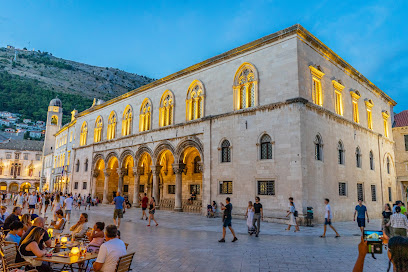
Pile Gate
Explore the rich history and breathtaking architecture of Pile Gate, the iconic entrance to Dubrovnik's enchanting Old Town.
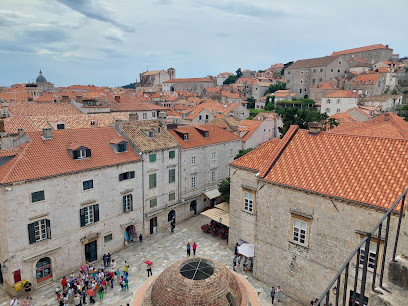
Jesuit Stairs
Unveil the beauty of Dubrovnik at the Jesuit Stairs, a historical landmark showcasing stunning Baroque architecture and breathtaking views.

Walls of Dubrovnik
Experience the rich history and breathtaking views of the ancient Walls of Dubrovnik, a UNESCO World Heritage site that enchants every visitor.
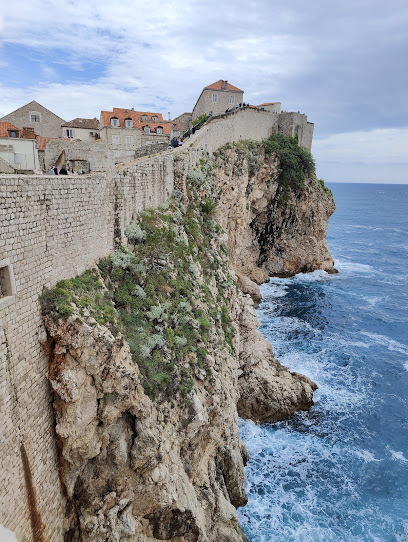
Clock Tower of Dubrovnik
Experience the timeless beauty of Dubrovnik's Clock Tower, a historic landmark that embodies the spirit and culture of this stunning city.

Tvrđava Svetog Ivana
Discover the historical grandeur and breathtaking views from Tvrđava Svetog Ivana, a must-visit fortress in the heart of Dubrovnik.
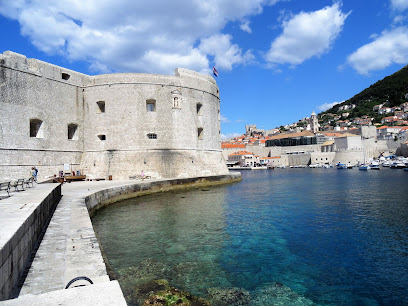
Züchtige Treppe
Explore the historical significance and architectural beauty of Züchtige Treppe, a captivating landmark in Dubrovnik's enchanting streets.
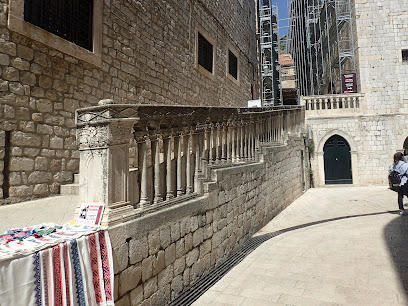
restored bombed Balkon Palace
Immerse yourself in history at the Restored Bombed Balkon Palace, a captivating landmark in Dubrovnik showcasing resilience and architectural beauty.

Fotos tras los bombardeos del Asedio a Dubrovnik (Obrana Dubrovnika) el 06/12/1991
Explore the haunting beauty of Dubrovnik's historical landmark, a powerful reminder of resilience during the 1991 siege, set against the backdrop of stunning architecture.
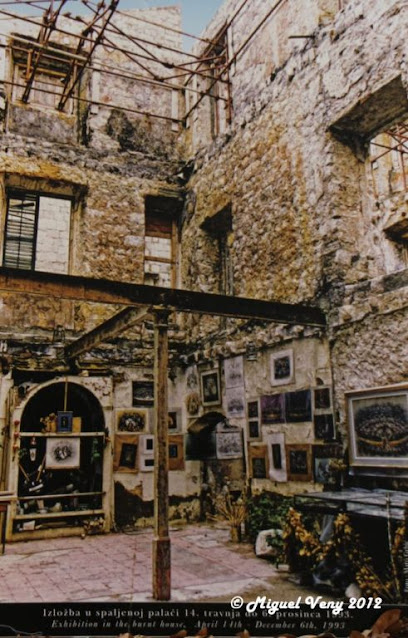
Unmissable attractions to see
Franciscan Church and Monastery
Explore the Franciscan Church and Monastery in Dubrovnik, a stunning blend of Gothic architecture and spiritual heritage amidst serene gardens.
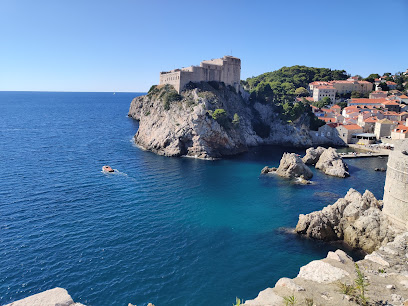
King's Landing Dubrovnik
Explore the enchanting world of King's Landing in Dubrovnik, where history and fantasy collide in a stunning coastal city.
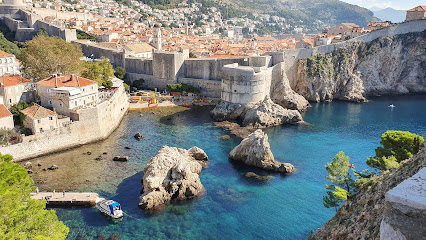
Clock Tower of Dubrovnik
Discover the enchanting history and architectural beauty of the Clock Tower in Dubrovnik, a landmark standing proudly in the heart of the Old Town.
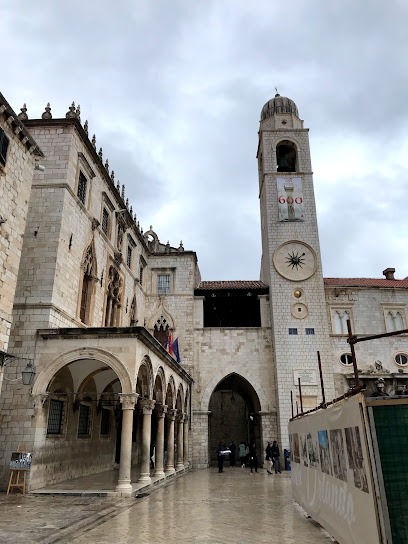
Essential places to dine
Lucin Kantun Dubrovnik
Discover the flavors of Dubrovnik at Lucin Kantun – where exquisite tapas meet warm hospitality in a vibrant setting.
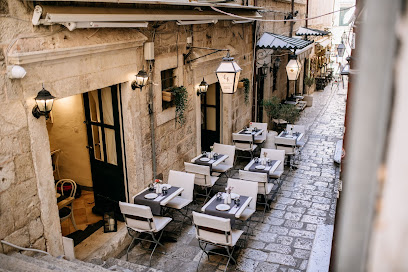
Trattoria Carmen
Experience authentic Mediterranean cuisine at Trattoria Carmen in Dubrovnik - where every dish tells a story.
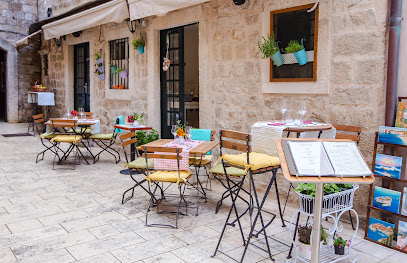
Bota Šare Oyster & Sushi Bar
Experience the best of Dubrovnik's culinary scene at Bota Šare Oyster & Sushi Bar - where fresh seafood meets exquisite sushi.

Soul Kitchen Dubrovnik
Experience authentic Croatian cuisine at Soul Kitchen Dubrovnik – where fresh ingredients meet vibrant flavors in a charming atmosphere.
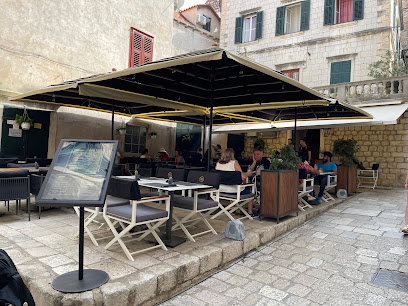
Mama's Pot Tavern
Experience authentic Croatian cuisine at Mama's Pot Tavern in Dubrovnik – where tradition meets flavor in a cozy atmosphere.
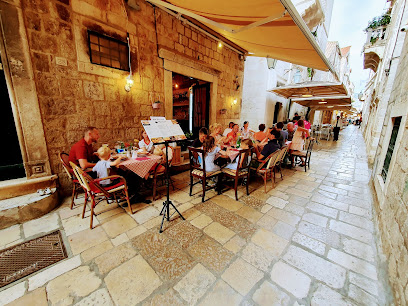
Restaurant Marco Polo
Experience authentic Croatian cuisine at Restaurant Marco Polo, where tradition meets taste in beautiful Dubrovnik.
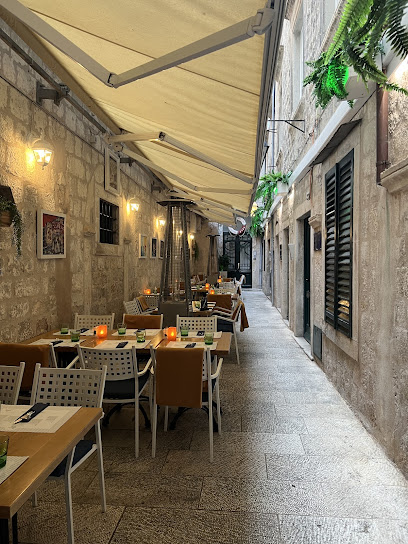
Forty Four Restaurant
Experience Mediterranean culinary excellence at Forty Four Restaurant in Dubrovnik—where fresh seafood meets delightful atmosphere.
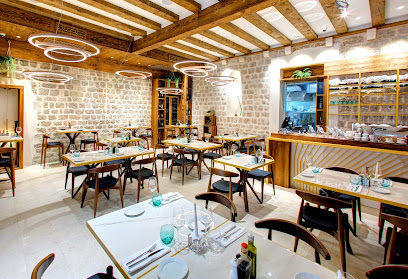
Restaurant Dubrovnik
Discover exquisite Mediterranean flavors at Restaurant Dubrovnik—an unforgettable fine dining experience in Croatia's historic city.
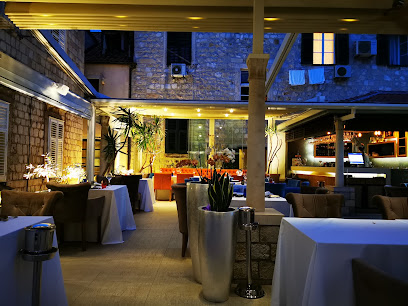
MOSKAR Street Food
Discover the heart of Dubrovnik through flavorful street food at MOSKAR - where local cuisine meets vibrant atmosphere.
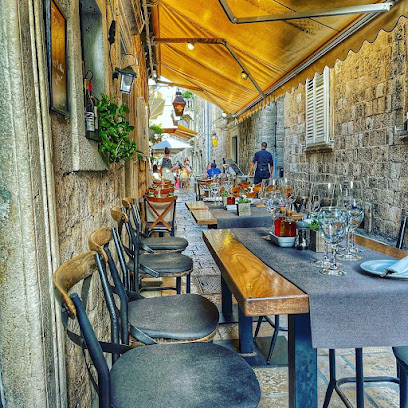
ARKA Dubrovnik (OLD TOWN)
Experience exquisite dining at ARKA Dubrovnik – where tradition meets innovation in every dish amidst breathtaking historical surroundings.
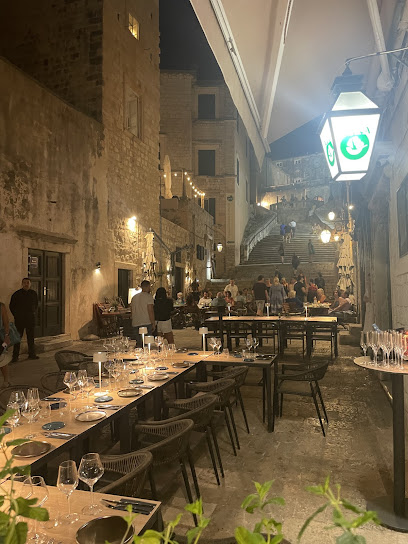
Markets, malls and hidden boutiques
Terra Croatica
Explore Terra Croatica in Dubrovnik for authentic Croatian souvenirs and crafts that capture the spirit of your travels.
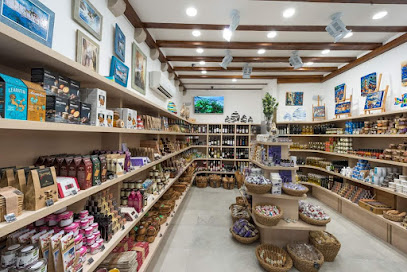
GIFT & ART SHOP MEDUSA
Explore the enchanting Gift & Art Shop Medusa in Dubrovnik, offering unique gifts and natural goods that reflect the region's rich culture and artistry.
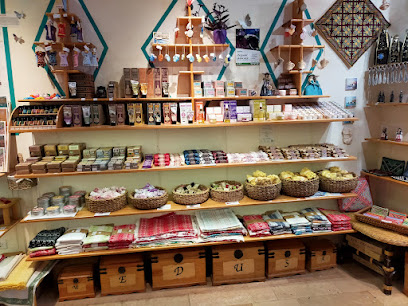
Stradun Fashion
Discover unique souvenirs and local crafts at Stradun Fashion, a charming gift shop in the heart of Dubrovnik's historic Stradun.
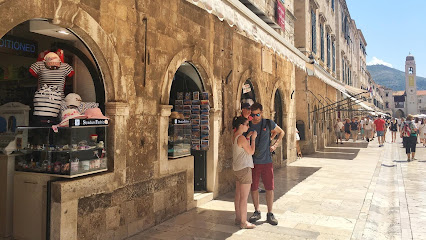
Kokula Art & Craft Shop
Discover authentic Croatian craftsmanship at Kokula Art & Craft Shop in Dubrovnik, your destination for unique gifts and local artistry.
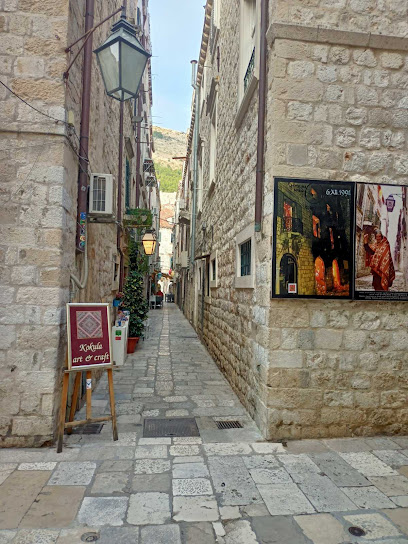
BOUTIQUE LA SCARPA
Explore Boutique La Scarpa in Dubrovnik for unique fashion pieces that blend modern style with traditional craftsmanship.
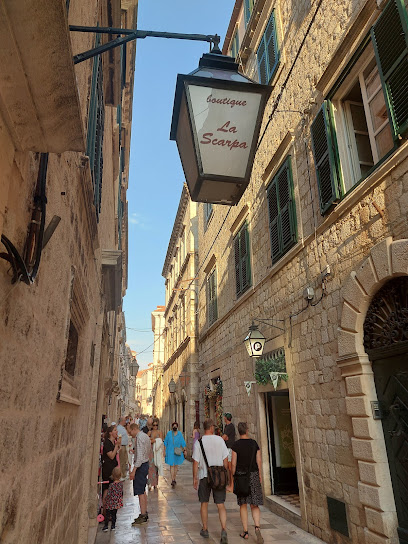
Boutique Prinčipesa
Explore Boutique Prinčipesa in Dubrovnik for unique local crafts, chic fashion, and memorable souvenirs reflecting the city's rich heritage.

Old Town Store
Explore the heart of Dubrovnik at Old Town Store, your go-to destination for authentic Croatian souvenirs and unique gifts.
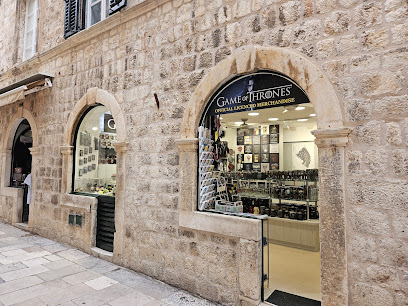
Duck Boutique Dubrovnik
Discover unique local crafts and souvenirs at Duck Boutique Dubrovnik, a charming store in the heart of the historic Old Town.
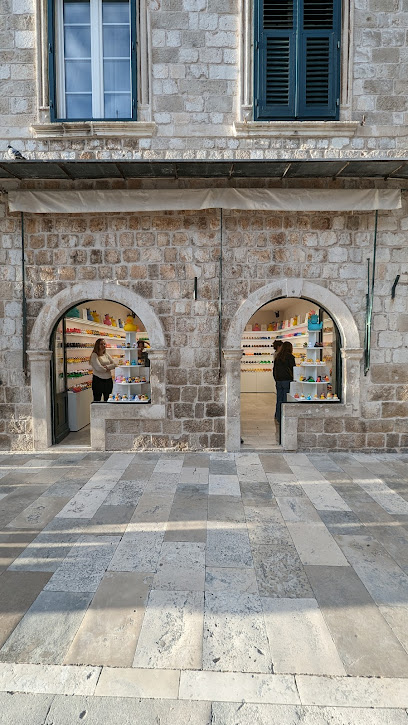
DOWNTOWN STORE
Explore the exquisite craftsmanship at Downtown Store, Dubrovnik's premier bangle shop, where every piece tells a story.
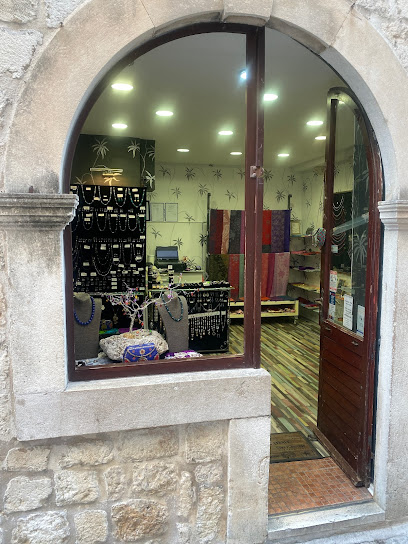
Dubrovnik shop
Explore authentic Croatian crafts and unique souvenirs at Dubrovnik Shop, the perfect stop during your visit to the historic city.

Essential bars & hidden hideouts
The Gaffe
Experience the spirit of Ireland in Dubrovnik at The Gaffe, where traditional cuisine meets a lively atmosphere and friendly service.
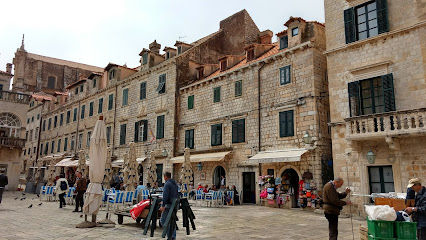
MILK fun area & cocktails
Discover the fun and inclusivity at MILK Fun Area & Cocktails, a premier bar and gay nightclub in Dubrovnik, where every night is a celebration.
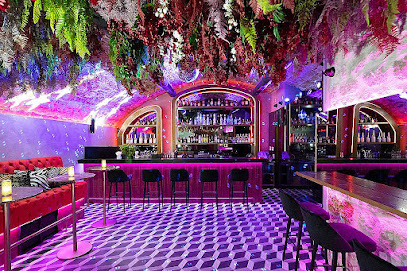
Buzz bar
Experience the vibrant atmosphere of Buzz Bar in Dubrovnik, where exquisite drinks and lively entertainment come together for an unforgettable nightlife experience.

THE BAR
Experience the vibrant nightlife of Dubrovnik at The Bar, where expertly crafted cocktails meet a warm and inviting atmosphere.
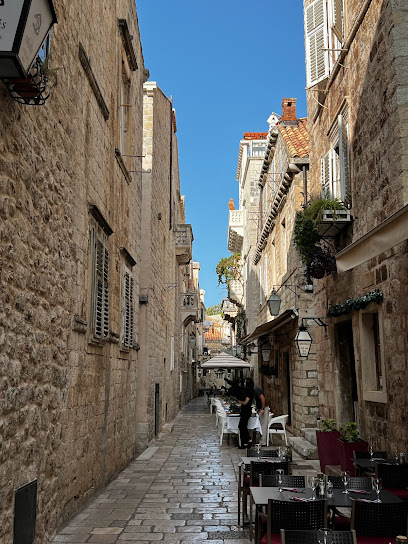
D'VINO WINE BAR DUBROVNIK
Discover the perfect blend of local wines and tapas at D'VINO Wine Bar in Dubrovnik, a must-visit for wine lovers and foodies alike.
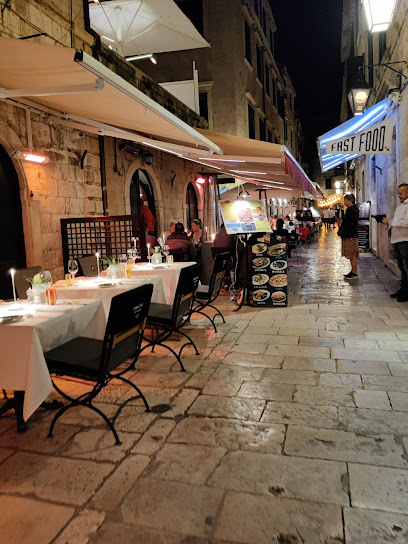
Glam Bar - #beertherapy
Discover Glam Bar in Dubrovnik, a vibrant spot for craft beer, cocktails, and tapas, perfect for relaxing and socializing in a beautiful setting.
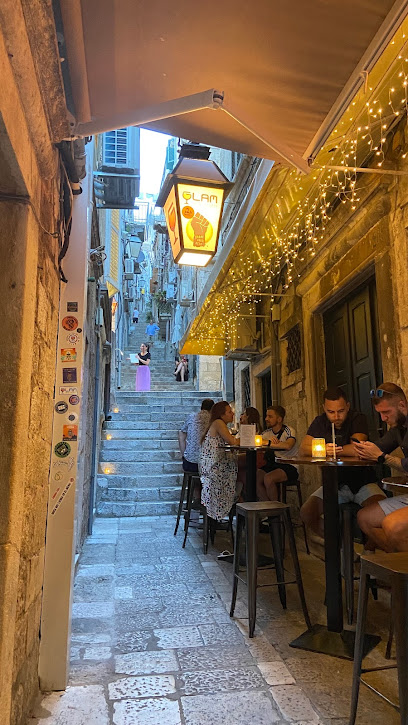
Pub Dubrovnik
Discover the perfect blend of local flavors and vibrant nightlife at Pub Dubrovnik, your ultimate gastropub experience in the heart of the city.
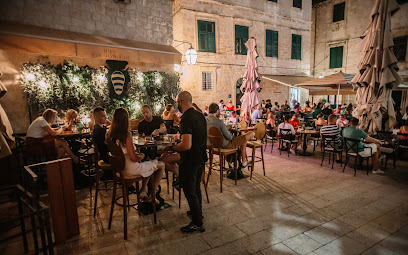
NoneNina Bar
Experience the vibrant nightlife and exquisite cocktails at Nina Bar, a must-visit cocktail haven in Dubrovnik's historic heart.
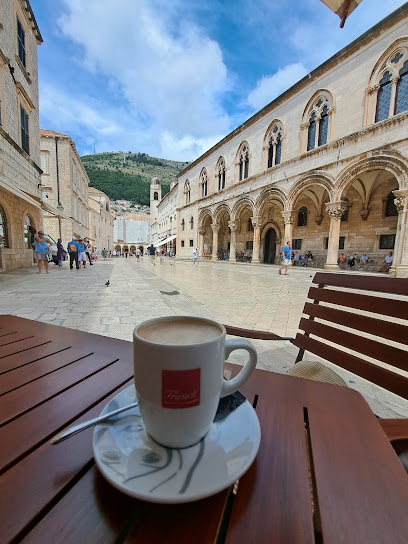
Primo
Discover Primo in Dubrovnik: a lively bar with a diverse drink menu, great atmosphere, and stunning views, perfect for unwinding after a day of exploration.
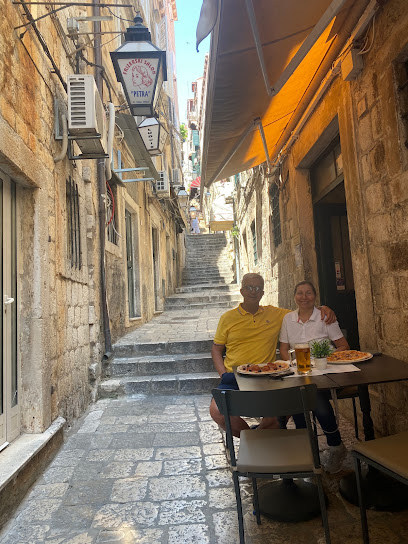
Wine Bar Škar Dubrovnik Old Town
Discover the unique flavors of Croatian wines at Wine Bar Škar in Dubrovnik's historic Old Town, a perfect blend of culture and taste.
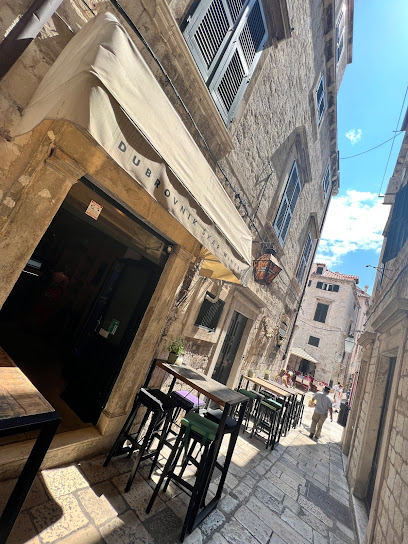
Local Phrases
-
- HelloBok
[Bohk] - GoodbyeDoviđenja
[Doh-vee-jen-ya] - YesDa
[Dah] - NoNe
[Neh] - Please/You're welcomeMolim
[Moh-leem] - Thank youHvala
[Hvah-lah] - Excuse me/SorryOprosti
[Oh-pros-tee] - How are you?Kako si?
[Kah-koh see] - Fine. And you?Dobro. A ti?
[Doh-bro. Ah tee] - Do you speak English?Govorite li engleski?
[Goh-voh-ree-teh lee ehng-lehs-kee] - I don't understandNe razumijem
[Neh rah-zoo-mee-yem]
- HelloBok
-
- I'd like to see the menu, pleaseMogu li vidjeti jelovnik, molim?
[Moh-goo lee vee-dyeh-tee yeh-lohv-neek, moh-leem] - I don't eat meatNe jedem meso
[Neh yeh-dem meh-so] - Cheers!Živjeli!
[Zhee-vee-lee] - I would like to pay, pleaseŽelim platiti, molim
[Zheh-leem plah-tee-tee, moh-leem]
- I'd like to see the menu, pleaseMogu li vidjeti jelovnik, molim?
-
- Help!Pomoć!
[Poh-mohch] - Go away!Idi dalje!
[Ee-dee dah-l-yeh] - Call the Police!Pozovite policiju!
[Poh-zoh-vee-teh poh-lee-tsee-yoo] - Call a doctor!Pozovite doktora!
[Poh-zoh-vee-teh d-o-ktoh-rah] - I'm lostIzgubljen sam
[Eez-goob-lyen sahm] - I'm illBolesan sam
[Boh-leh-sahn sahm]
- Help!Pomoć!
-
- I'd like to buy...Želim kupiti...
[Zheh-leem koo-pee-tee] - I'm just lookingSamo gledam
[Sah-moh gleh-dahm] - How much is it?Koliko košta?
[Koh-lee-koh koh-shta] - That's too expensiveTo je prekupo
[Toh yeh preh-koo-poh] - Can you lower the price?Možete li spustiti cijenu?
[Moh-zheh-teh lee spoos-tee-tee tsee-yeh-noo]
- I'd like to buy...Želim kupiti...
-
- What time is it?Koliko je sati?
[Koh-lee-koh yeh sah-tee] - It's one o'clockJedan je sat
[Yeh-dahn yeh saht] - Half past (10)Pola (deset)
[Poh-lah (deh-set)] - MorningJutro
[Yoo-troh] - AfternoonPopodne
[Poh-pohd-neh] - EveningVečer
[Veh-chehr] - YesterdayJučer
[Yoo-chehr] - TodayDanas
[Dah-nahs] - TomorrowSutra
[Soo-trah] - 1Jedan
[Yeh-dahn] - 2Dva
[Dvah] - 3Tri
[Tree] - 4Četiri
[Cheh-tee-ree] - 5Pet
[Peh-t] - 6Šest
[Shehst] - 7Sedam
[Seh-dahm] - 8Osam
[Oh-sahm] - 9Devet
[Deh-vet] - 10Deset
[Deh-set]
- What time is it?Koliko je sati?
-
- Where's a/the...?Gdje je...
[Gdyeh yeh] - What's the address?Koja je adresa?
[Koh-yah yeh ah-dreh-sah] - Can you show me (on the map)?Možete li mi pokazati (na karti)?
[Moh-zheh-teh lee mee poh-kah-zah-tee (nah kahr-tee)] - When's the next (bus)?Kada je sljedeći (autobus)?
[Kah-dah yeh sleh-deh-chee (ow-toh-boos)] - A ticket (to ....)Jedna karta (za ....)
[Yeh-dnah kar-tah (zah)]
- Where's a/the...?Gdje je...
History of Old Town
-
Dubrovnik, known as Ragusa in Latin, was established as a settlement in the 7th century. Its strategic location along maritime trade routes enabled it to flourish as an independent city-state. By the 14th century, Dubrovnik developed a unique political system, establishing the Republic of Ragusa, which thrived on trade and diplomacy, becoming a prominent player in the Mediterranean.
-
From the 12th to the 17th centuries, Dubrovnik fortified its defenses with massive stone walls, reaching their peak during the late 15th century. These walls, some of the best-preserved in Europe, were built to protect the city from invasions, particularly during the Ottoman expansion. The fortifications include the iconic Pile Gate and the imposing Minceta Fortress, reflecting the city's commitment to its independence and security.
-
The Black Death struck Dubrovnik in 1348, decimating the population. In response, the city implemented strict quarantine measures, establishing the first known quarantine station on the nearby island of Lokrum. This proactive approach not only saved lives but also laid the groundwork for a resilient recovery, allowing Dubrovnik to regain its status as a thriving trade center.
-
The 15th and 16th centuries marked a golden age for Dubrovnik, as it became a hub of art, literature, and architecture. Influences from the Italian Renaissance permeated the city, leading to the construction of stunning structures such as the Sponza Palace and the Rector's Palace. This period also saw the establishment of the Dubrovnik Republic's law code, emphasizing civic responsibility and cultural pride.
-
On April 6, 1667, a catastrophic earthquake struck Dubrovnik, destroying a significant portion of the city and claiming thousands of lives. The reconstruction that followed saw the blending of Baroque architectural styles with the existing Gothic and Renaissance elements, resulting in the city's current architectural character. Landmarks such as the Church of St. Blaise and the Cathedral of the Assumption were rebuilt during this era.
-
In the early 19th century, Dubrovnik fell under the rule of Napoleon, who integrated it into the French Empire. Following his defeat, the Congress of Vienna in 1815 placed Dubrovnik under Austro-Hungarian rule, which lasted until World War I. This period brought significant changes in governance and infrastructure, enhancing the city's status as a cultural and administrative center in the region.
-
The Yugoslav Wars in the early 1990s had a profound impact on Dubrovnik, with the city suffering from shelling in 1991. The damage to its historical structures was extensive, prompting a significant international effort for restoration. By the late 1990s, Dubrovnik was recognized as a UNESCO World Heritage Site, highlighting its cultural significance and the importance of preserving its rich history.
Old Town Essentials
-
Old Town Dubrovnik is easily accessible from various neighborhoods within the city. The main entry point is through the Pile Gate, which is well-connected by local buses. The local bus number 1A and 1B frequently runs from the main bus station and other neighborhoods, including Lapad and Gruz. For visitors arriving at Dubrovnik Airport, shuttle services and taxis are available to transport you directly to the Old Town, typically taking about 30 minutes depending on traffic.
-
Old Town is a pedestrian-only zone, making it easy to explore on foot. The narrow cobbled streets are best navigated by walking. There are no trains or buses within the Old Town; however, the local bus system connects to nearby areas. Bicycles can be rented outside the Old Town, but cycling inside is not permitted. For those with mobility issues, be aware that the terrain is uneven and can be challenging.
-
Old Town Dubrovnik is generally very safe for tourists. However, standard precautions should be taken. Petty crimes, such as pickpocketing, can occur, especially in crowded areas like Stradun and near popular attractions. It is advisable to keep valuables secure and be mindful of your surroundings. Avoid poorly lit areas at night and always trust your instincts.
-
In case of an emergency, dial 112 for immediate assistance. This number connects you to police, fire, and medical services. There are hospitals and clinics in and around Dubrovnik, with the nearest emergency room located in the city center. It is highly recommended to have travel insurance to cover any medical emergencies. For non-urgent issues, pharmacies are available throughout Old Town.
-
Fashion: Do dress modestly, especially when visiting religious sites like the Cathedral of the Assumption. Don't wear revealing clothing in these areas. Religion: Do respect local customs and traditions, including quiet behavior in churches. Don't take photos in churches without permission. Public Transport: Do be courteous on local buses. Don't eat or drink on public transport. Greetings: Do greet locals with a friendly 'Dobar dan' (Good day). Don't assume everyone speaks English; a few Croatian phrases can go a long way. Eating & Drinking: Do try local dishes and enjoy outdoor dining. Don't engage in loud behavior in restaurants; it is considered impolite.
-
To experience Old Town like a local, visit the local markets early in the morning for fresh produce and authentic Croatian products. Take a stroll through the less crowded side streets to discover charming cafes and shops. Engage with locals who are often happy to share stories about their city. Additionally, consider visiting the city walls at sunrise or sunset for breathtaking views without the crowds. Don't forget to sample local wines and traditional dishes like 'peka' at family-owned restaurants for an authentic dining experience.
Trending Landmarks in Old Town
Nearby Cities to Old Town
-
Things To Do in Trebinje
-
Things To Do in Herceg Novi
-
Things To Do in Perast
-
Things To Do in Tivat
-
Things To Do in Kotor
-
Things To Do in Nikšić
-
Things To Do in Cetinje
-
Things To Do in Budva
-
Things To Do in Mostar
-
Things To Do in Podgorica
-
Things To Do in Bar
-
Things To Do in Makarska
-
Things To Do in Ulcinj
-
Things To Do in Hvar
-
Things To Do in Sarajevo






